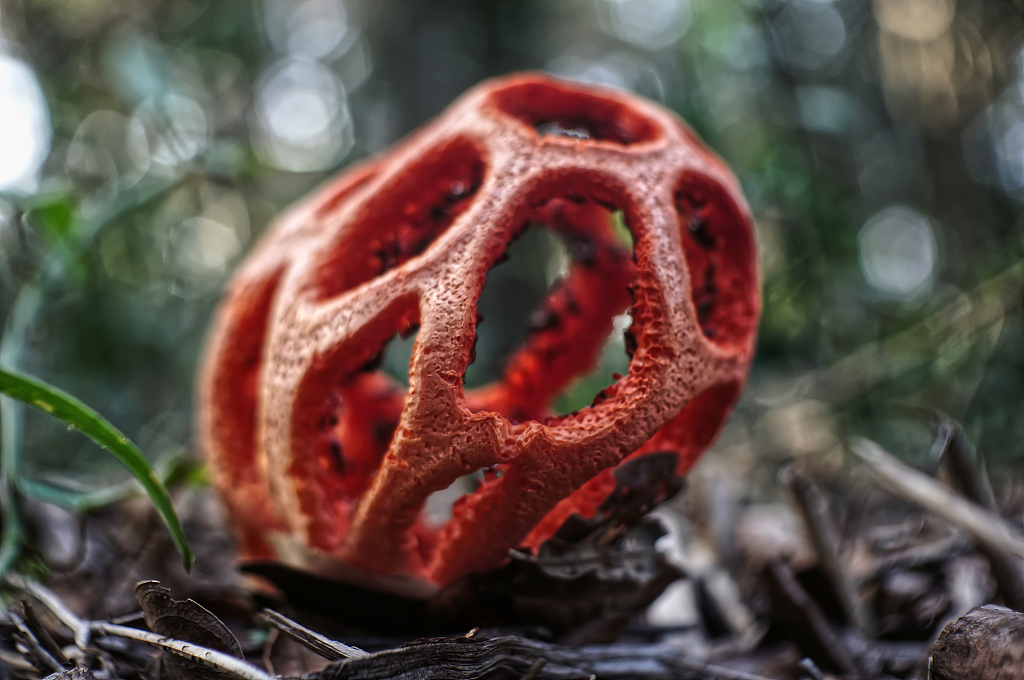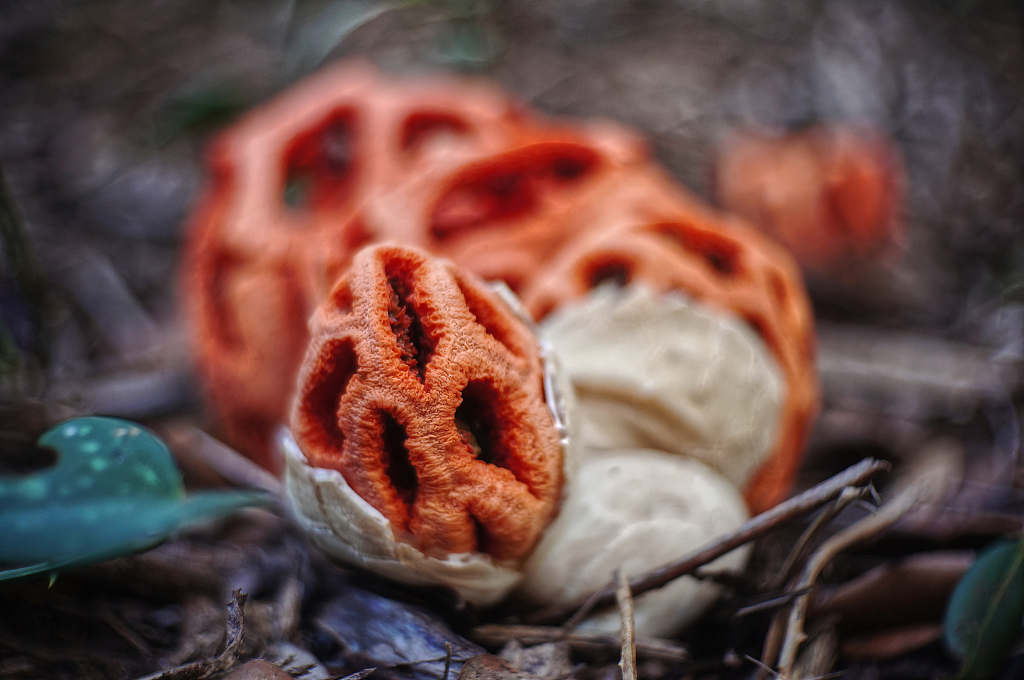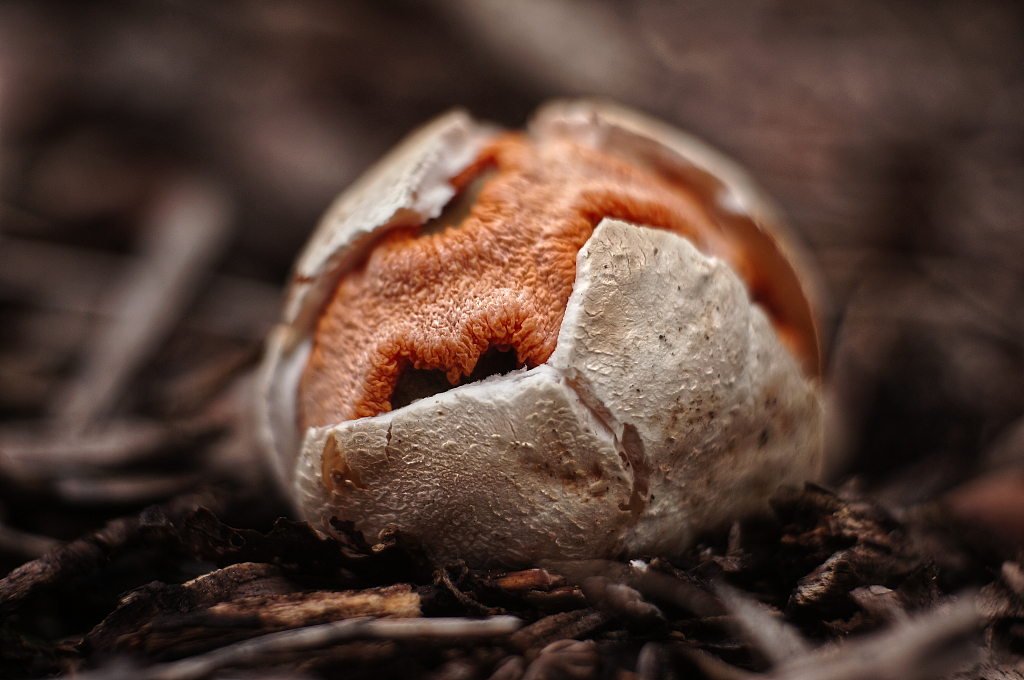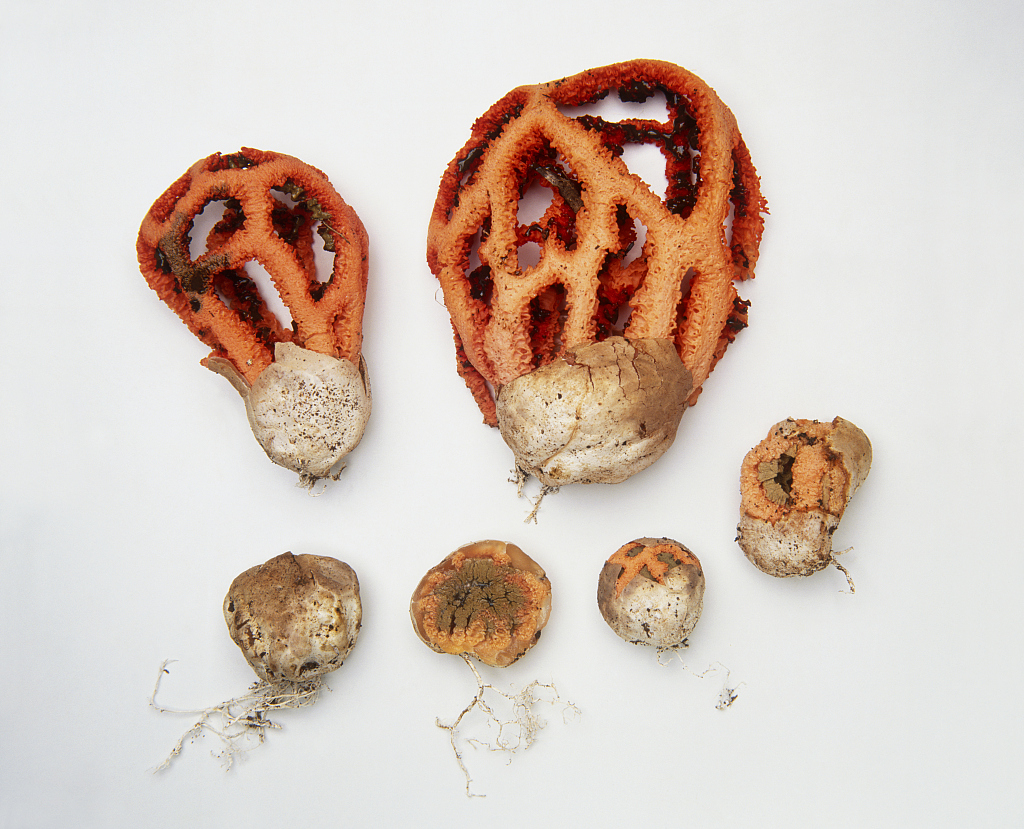Similar to a cage ball toy for doggies, the red cage fungus or the latticed stinkhorn has a delicate three-dimensional structure. It can grow as big as a pomelo. Despite looking like a vicious look as a trap, it doesn't cage small mammals or insects. Instead, the fungus emits a putrid stench, like rotten meat to attract flies. When flies touch the smelly slime inside the cage and fly away, they help the fungus spread spores and occupy new territories.

The red cage fungus. /CFP
The red cage fungus. /CFP
The scientific name of the fungus is Clathrus ruber, which accurately describes its appearance. The generic name "Clathrus" means a cage, while "ruber" means red. Interestingly, the pigments that give the fungus a red color are carotenes, predominantly lycopene and beta-carotene, which are the same compounds that make tomatoes and carrots look red.

The red cage fungus. /CFP
The red cage fungus. /CFP

The red cage fungus. /CFP
The red cage fungus. /CFP
The red cage fungus has no stem like common mushrooms. It might surprise you that the fungus initially starts off as a white ball, about the size of a golf ball. This is a feature shared by fungi in the stinkhorn family. As the ball splits open, the fruit body soon expands to become a large, cage-like red mesh, and will collapse in little more than 24 hours.

Different growth stages of the red cage fungus. /CFP
Different growth stages of the red cage fungus. /CFP
If you live in southern Europe, you can probably find the red cage fungus in gardens and park mulches. Although the fungus is generally considered to be native to southern Europe, it has also been introduced elsewhere, possibly because of imported mulch used in gardening.

Closeup of the red cage fungus. /CFP
Closeup of the red cage fungus. /CFP

